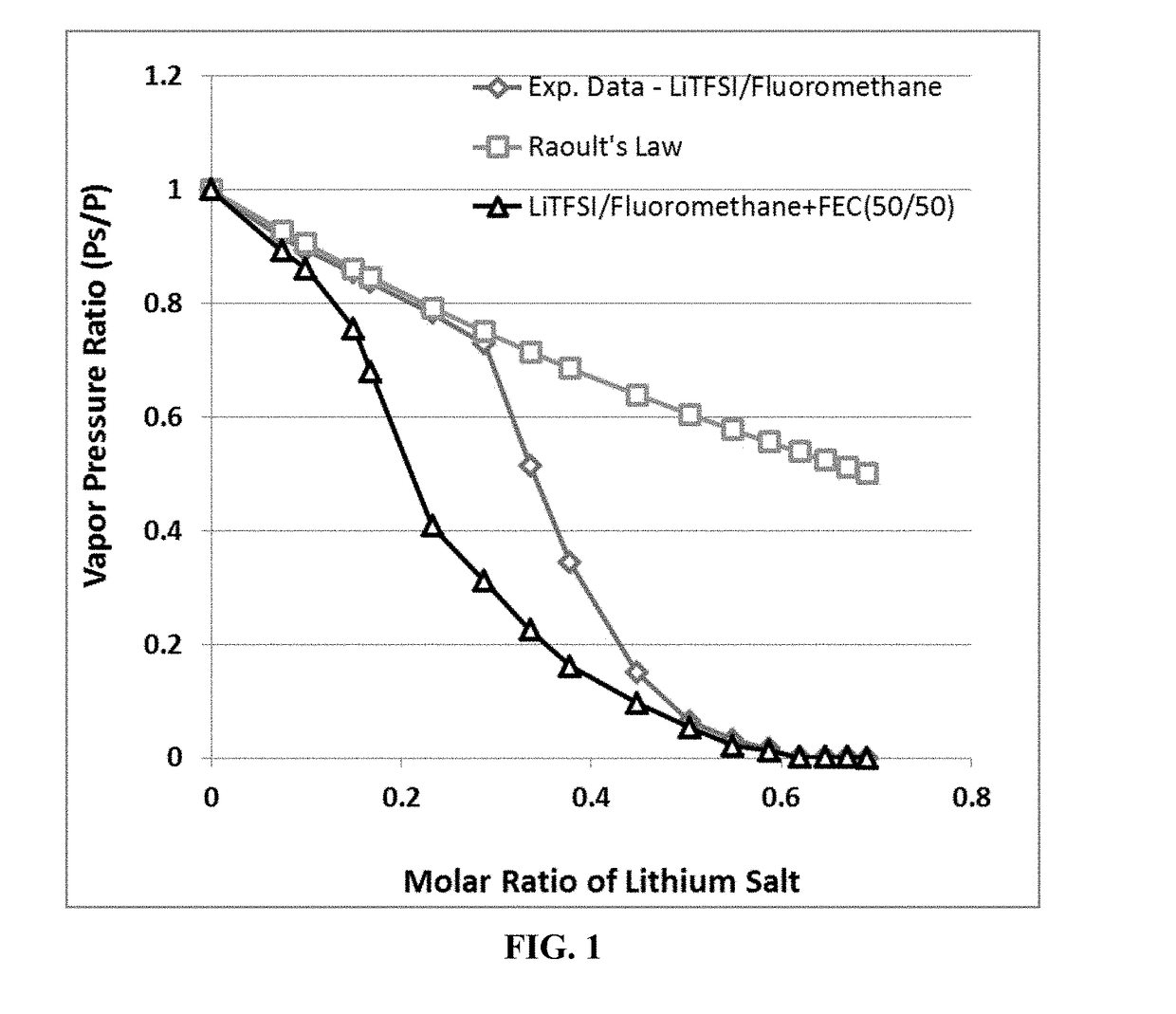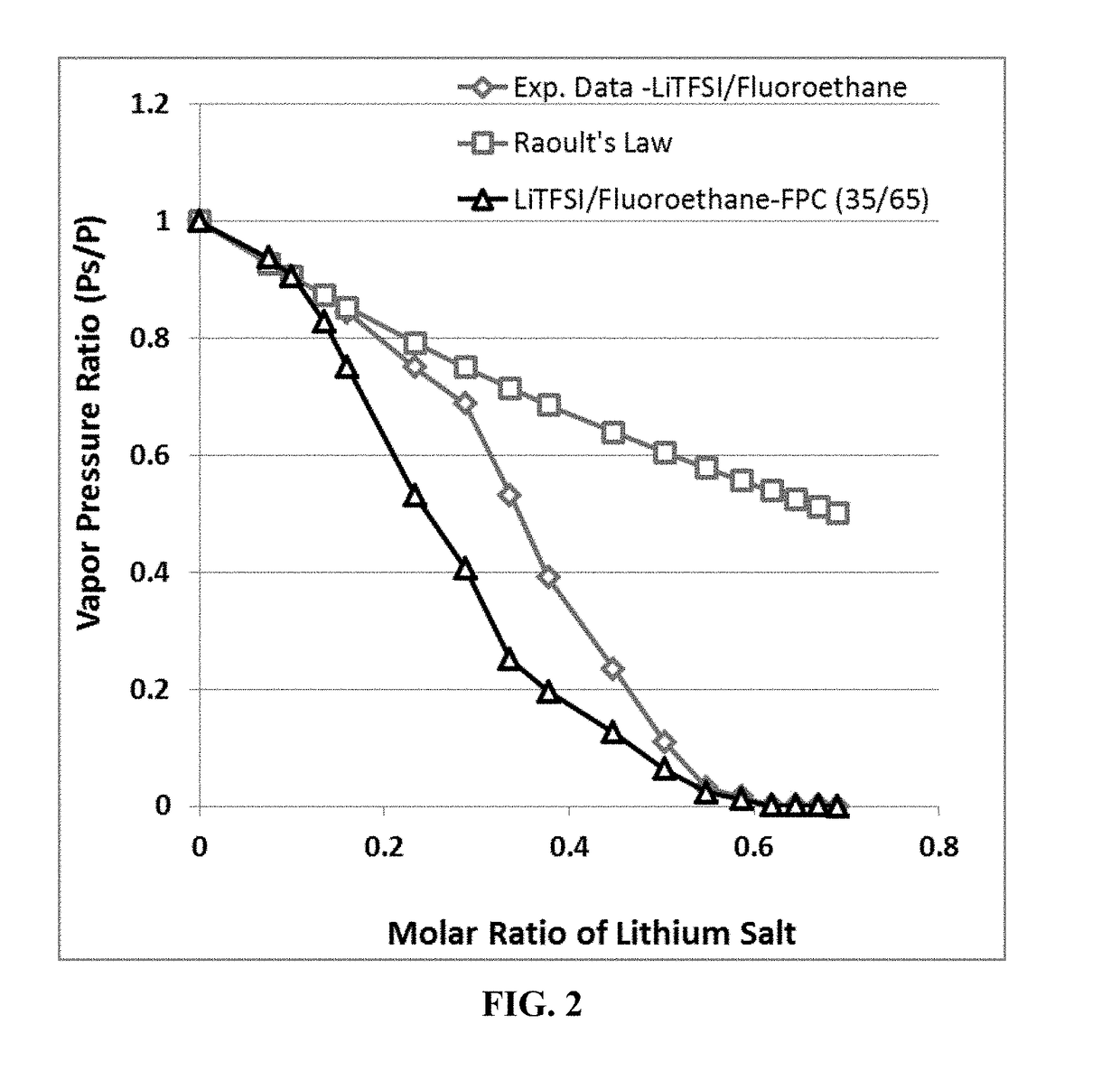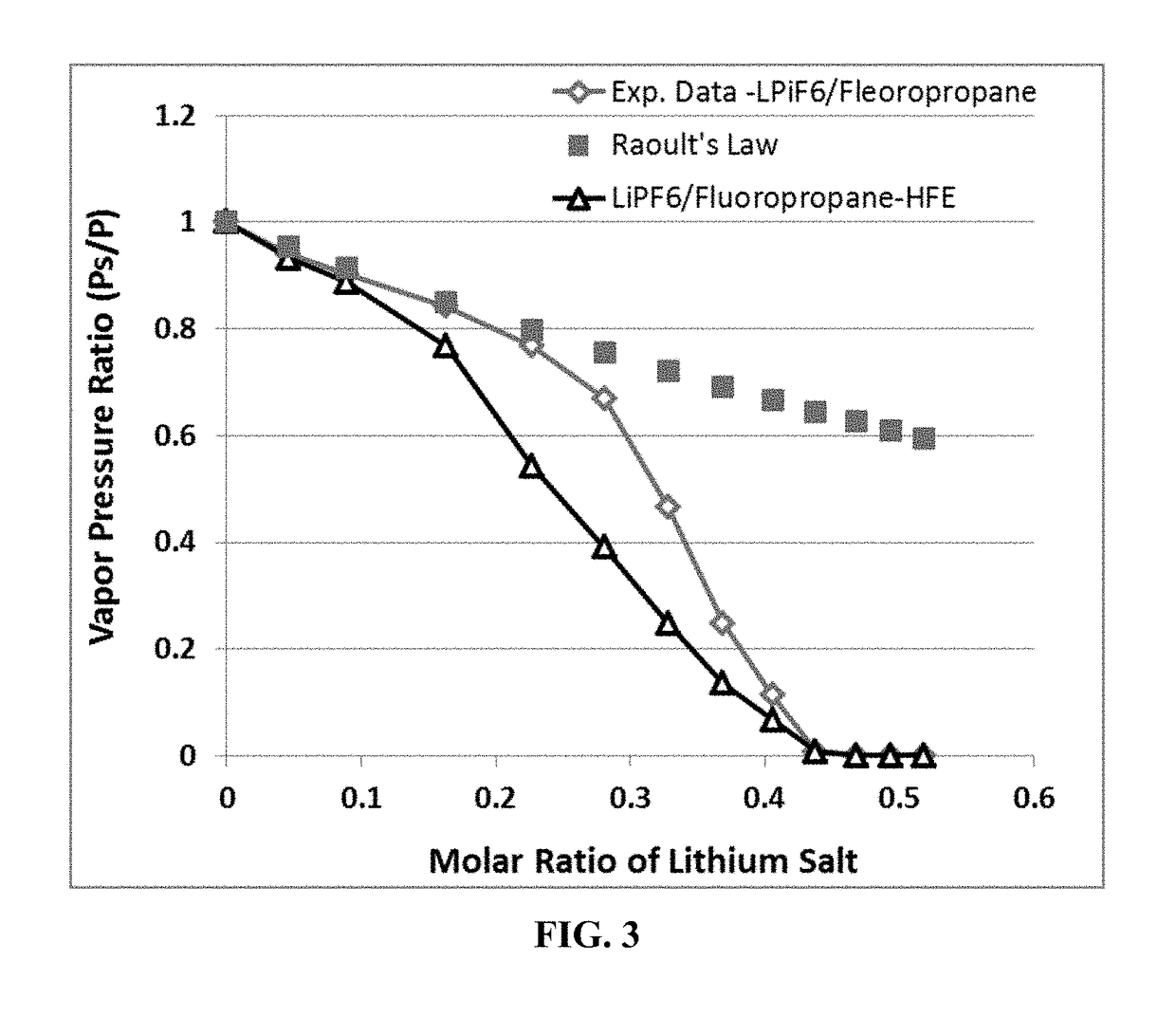Non-flammable Electrolyte Containing Liquefied Gas and Lithium Secondary Batteries Containing Same
a lithium secondary battery and non-flammable electrolyte technology, which is applied in the direction of electrolytes, electrochemical generators, cell components, etc., to achieve the effect of preventing potential li metal dendrite internal short circuit and thermal runaway problems, simple and cost-effective approach, and low electric and ionic conductivity
- Summary
- Abstract
- Description
- Claims
- Application Information
AI Technical Summary
Benefits of technology
Problems solved by technology
Method used
Image
Examples
example 1
Some Examples of Electrolytes Used
[0148]A wide range of lithium salts can be used as the lithium salt dissolved in an organic liquid solvent (alone or in a mixture with another organic liquid or an ionic liquid). The following are good choices for lithium salts that tend to be dissolved well in selected organic or ionic liquid solvents: lithium borofluoride (LiBF4), lithium trifluoro-metasulfonate (LiCF3SO3), lithium bis-trifluoromethyl sulfonylimide (LiN(CF3 SO2)2 or LITFSI), lithium bis(oxalato)borate (LiBOB), lithium oxalyldifluoroborate (LiBF2C2O4), and lithium bisperfluoroethy-sulfonylimide (LiBETI). A good electrolyte additive for helping to stabilize Li metal is LiNO3. Particularly useful ionic liquid-based lithium salts include: lithium bis(trifluoro methanesulfonyl)imide (LiTFSI).
[0149]Preferred liquefied gases include methane, fluoromethane, difluoromethane, chloromethane, dichloromethane, ethane, fluoroethane, difluoroethane, tetrafluoroethane, chloroethane, dichloroethan...
example 2
Vapor Pressure of Some Solvents and Corresponding Quasi-Solid Electrolytes with Various Lithium Salt Molecular Ratios
[0153]Vapor pressures of several liquefied gas solvents (with or without a co-solvent) before and after adding a wide molecular ratio range of lithium salts, such as lithium borofluoride (LiBF4), lithium trifluoro-metasulfonate (LiCF3SO3), or bis(trifluoro methanesulfonyl)imide (LiTFSI), and a broad array of electrolyte additives were measured. Some of the vapor pressure ratio data (ps / p=vapor pressure of solution / vapor pressure of solvent alone) are plotted as a function of the lithium salt molecular ratio x, as shown in FIG. 1-FIG. 4, along with a curve representing the Raoult's Law. In most of the cases, the vapor pressure ratio follows the theoretical prediction based on Raoult's Law for up to xs / p value, the vapor phase of the electrolyte either cannot ignite or cannot sustain a flame for longer than 3 seconds once initiated. More significantly, by adding some am...
example 3
Flash Points and Vapor Pressure of Some Solvents and Additives and Corresponding Quasi-Solid Electrolytes with a Lithium Salt Molecular Ratio of x=0.2
[0154]The flash points of several solvents (with or without a liquid additive) and their electrolytes having a lithium salt molecular ratio x=0.2 are presented in Table 1 below. It may be noted that, according to the OSHA (Occupational Safety & Health Administration) classification, any liquid with a flash point below 35.7° C. is flammable. However, in order to ensure safety, we have designed our quasi-solid electrolytes to exhibit a flash point significantly higher than 38.7° C. (by a large margin, e.g. at least increased by 50° and preferably above 150° C.). The data in Table 1 indicate that the addition of a lithium salt to a molecular ratio of 0.2 is normally sufficient to meet these criteria provided a selective additive is added into the liquid solvent.
TABLE 1The flash points and vapor pressures of select solvents andtheir electr...
PUM
| Property | Measurement | Unit |
|---|---|---|
| vapor pressure | aaaaa | aaaaa |
| vapor pressure | aaaaa | aaaaa |
| vapor pressure | aaaaa | aaaaa |
Abstract
Description
Claims
Application Information
 Login to View More
Login to View More - R&D
- Intellectual Property
- Life Sciences
- Materials
- Tech Scout
- Unparalleled Data Quality
- Higher Quality Content
- 60% Fewer Hallucinations
Browse by: Latest US Patents, China's latest patents, Technical Efficacy Thesaurus, Application Domain, Technology Topic, Popular Technical Reports.
© 2025 PatSnap. All rights reserved.Legal|Privacy policy|Modern Slavery Act Transparency Statement|Sitemap|About US| Contact US: help@patsnap.com



